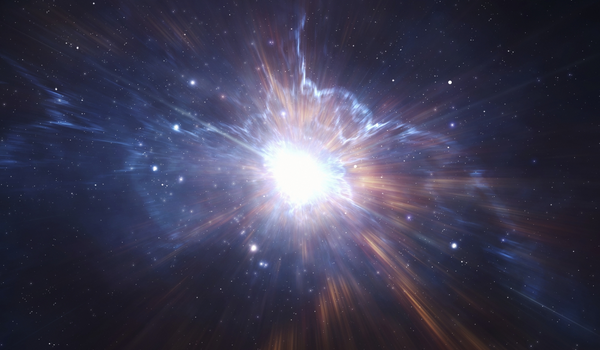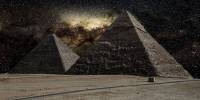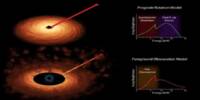High-speed star formation is a phenomenon that occurs when molecular clouds in interstellar space collapse under their own gravity, leading to the birth of new stars at a much faster rate than normal. Recently, scientists have observed such a process in action in a nearby galaxy known as the Large Magellanic Cloud.
New observations have revealed that stars can form as a result of the dynamic interaction of gas within interstellar gas clouds. This process is moving faster than previously thought, according to research conducted as part of the FEEDBACK program aboard the flying observatory SOFIA.
Despite the fact that SOFIA is no longer in operation, the data collected thus far are critical for basic astronomical research because there is no longer an instrument that comprehensively maps the sky in this wavelength range (typically 60 to 200 micrometers). The James Webb Space Telescope, which is now operational, observes infrared at shorter wavelengths and focuses on spatially small areas. As a result, the SOFIA data analysis is ongoing and continues to provide important insights – including information about other star-forming regions:
“In the list of FEEDBACK sources, there are other gas clouds in different stages of evolution, where we are now looking for the weak CII radiation at the peripheries of the clouds to detect similar interactions as in the Cygnus X region,” Schneider concluded.
The results of the study ‘Ionized carbon as a tracer for the assembly of interstellar clouds’ will appear in the next issue of Nature Astronomy.
In the list of FEEDBACK sources, there are other gas clouds in different stages of evolution, where we are now looking for the weak CII radiation at the peripheries of the clouds to detect similar interactions as in the Cygnus X region.
Dr. Schneider
The observations were carried out as part of the FEEDBACK program on board the flying observatory SOFIA in an international project led by Dr. Nicola Schneider of the University of Cologne and Prof Alexander Tielens of the University of Maryland (Stratospheric Observatory for Infrared Astronomy). The new findings challenge previous beliefs that this particular process of star formation is quasi-static and quite slow. The newly discovered dynamic formation process would also explain the formation of particularly massive stars.
The team discovered that the shells of interstellar gas clouds are made of hydrogen and collide with each other at speeds of up to twenty kilometers per second by comparing the distribution of ionized carbon, molecular carbon monoxide, and atomic hydrogen. “This high speed compresses the gas into denser molecular regions where new, mainly massive stars form. “We needed the CII observations to detect this otherwise “dark” gas,” Dr. Schneider explained. The observations reveal for the first time the faint CII radiation from the clouds’ periphery, which had previously gone unnoticed. This radiation could only be detected by SOFIA and its sensitive instruments.

NASA and the German Aerospace Center (DLR) operated SOFIA until September 2022. The observatory was a converted Boeing 747 with a 2.7-meter telescope built in. The German SOFIA Institute (DSI) and the Universities Space Research Association coordinated it (USRA). SOFIA observed the sky from the stratosphere (above 13 kilometers) and covered the infrared region of the electromagnetic spectrum, which is just beyond the range of human vision.
As a result, Boeing flew above the majority of the water vapour in the Earth’s atmosphere, which would otherwise block out infrared light. The scientists were able to observe a wavelength range that is not visible from Earth. For the current results, the team used the upGREAT receiver installed on SOFIA in 2015 by the Max Planck Institute for Radio Astronomy in Bonn and the University of Cologne.
Despite the fact that SOFIA is no longer in operation, the data collected thus far are critical for basic astronomical research because there is no longer an instrument that comprehensively maps the sky in this wavelength range (typically 60 to 200 micrometers). The James Webb Space Telescope, which is now operational, observes infrared at shorter wavelengths and focuses on spatially small areas.
As a result, the SOFIA data analysis is ongoing and continues to provide important insights – including information about other star-forming regions: “There are other gas clouds in different stages of evolution in the list of FEEDBACK sources, where we are now looking for weak CII radiation at the peripheries of the clouds to detect similar interactions as in the Cygnus X region,” Schneider concluded.
Overall, these observations provide new insights into the complex processes that govern the formation of stars and galaxies. They also demonstrate the power of ALMA, which is one of the most advanced astronomical observatories in the world, for studying the universe in great detail.
















